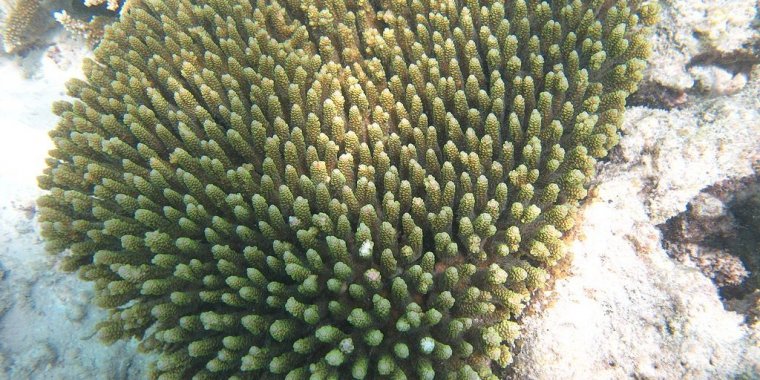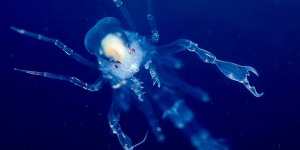| News / Science News |
Voracious fish defend coral reefs against warming
Researchers from the Georgia Institute of Technology (GT) and University of South Carolina Beaufort, both in the United States, reported warming seas appear to decrease the efficacy of the chemical compounds that corals release into the water to defend themselves from bacteria and encroaching seaweed, but these losses may be mitigated if there are large numbers of hungry fish around.

A. millepora showed greater resistance to bleaching in reefs with more fish. ![]()
The research was led by Mark Hay, a marine ecologist and Regents Professor at GT, who said "There is a lot of argument now about whether local management can help in the face of global stresses — whether what a Fijian village does matters when people in London and Los Angeles burn fossil fuels to drive to work". Hay added, "Our work indicates that local management provides a degree of insurance against global stresses, but there are likely higher temperatures that render the insurance ineffective."
The researchers examined three types of coral in reefs off the coast of Fiji, Acropora millepora, Porites cylindrica, and Pocillopora damicornis. Some of these reefs were in areas where fishing was prohibited and some were not.
The researchers found when fish were plentiful, they would eat algae and seaweed off the corals, which appeared to leave them more resistant to the bacterium Vibrio coralliilyticus, a bacterium associated with bleaching.
The researchers suggested the algae, like warming temperatures, might render the corals' chemical defenses less effective, and the fish were protecting the coral by removing the algae. They reported, "Macroalgae are suggested to disrupt coral microbiomes via transfer of allelochemicals or microbes or release of dissolved organic carbon that affects microbial growth".
P. cyclindrica and P. damicornis are known to be function under conditions that damage other corals and A. millepora is not.
Each reef-building coral unit is a collection of polyps living in symbiotic partnership with zooxanthellae algae. The polyp, a cnidarian as are jellyfish, provides stinging protection and secretes a calcium shell, and the algae performs photosynthesis, produces oxygen and gives the coral its color.
Changing ocean environments have led to a phenomenon called coral bleaching when warmer waters cause the cnidarian to expel the algae from its body, which turns the coral reefs white. This does not kill the cnidarian partner but does leave it badly weakened and vulnerable to disease. (Wikinews)
YOU MAY ALSO LIKE





